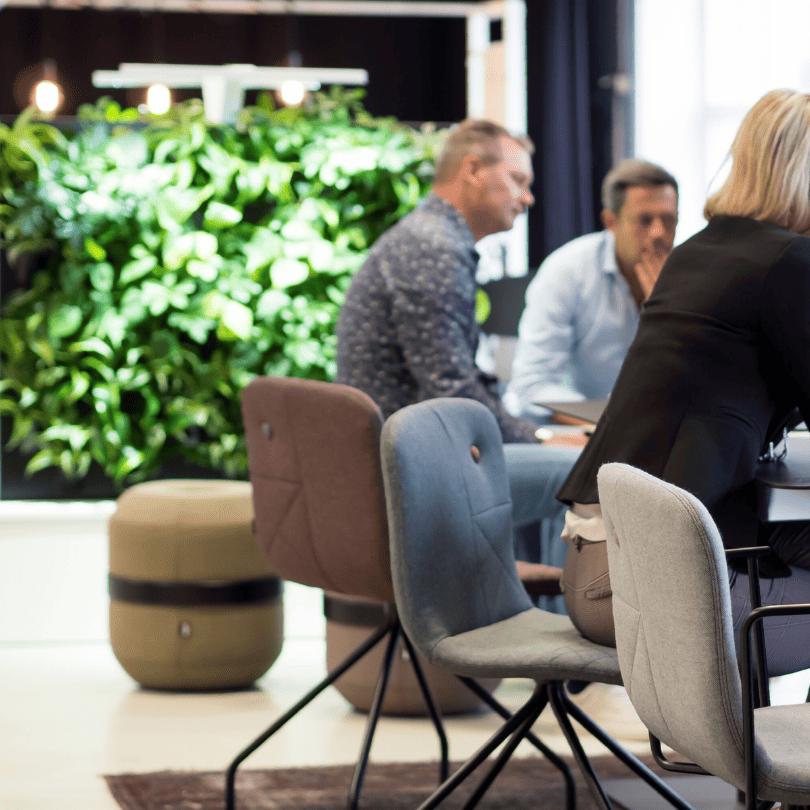Office design often assumes a “one-size-fits-all brains” approach, but we all think differently and uniquely respond to the workplace environment around us. Some people may be bothered by the cell phone pings of their office mates, while others may find the lighting or colors of a meeting room distracting. Increasingly, employers are discovering that embracing neurodiversity in office design — accommodating the different responses people have to a shared environment — can improve performance, productivity, and morale for all employees.
Why Neurodiversity in Office Design Matters
So what is neurodiversity exactly? It refers to the inclusion of people who think and communicate differently due to atypical brain functions and behaviors, such as Autism Spectrum Disorder (ASD), Attention Deficit Hyperactivity Disorder (ADHD), dyslexia, Tourette’s syndrome, and other neurodivergent conditions. Neurodivergent people make up 15-20% of the U.S. population and tend to be high-energy, out-of-the-box thinkers who excel at problem-solving and crisis management but often struggle to navigate the modern workplace.
While each of these neurodivergent conditions differs, people with them generally experience spaces differently from the rest of the world. They have a greater sensitivity to physical surroundings — and this makes them more likely to experience stress and anxiety, especially if they happen to be in a crowded, noisy office where it’s hard to focus, collaborate or feel at ease.
Distractions can be particularly disruptive for neurodivergent employees. They may also be more sensitive to sensory cues in the workplace that under or overstimulate or struggle with wayfinding or how they orient themselves in the workspace. Employers can support neurodiversity and ensure their office spaces reflect the myriad of ways employees experience and interact with their surroundings by following these design principles.

Create a Sense of Safety and Familiarity
People with neurodivergent conditions thrive on repetition, predictability, and clear boundaries to feel safe and in control. Therefore environments need to make sense and be easy to navigate. We all know how easy it is to get lost in offices where everything looks the same. That disorientation is magnified for neurodivergents. Creating memorable spaces with visual landmarks and clear lines of sight, such as internal staircases or mezzanines, can help orient them. Signage can be particularly frustrating for those with dyslexia, so incorporating more intuitive environmental clues, such as focal points like an art piece or repeating elements from floor to floor or space to space, can create a sense of order and improve navigation.

Rethink Light and Color
Many neurodiverse people, especially those with ADHD, find bright, flickering, or unnatural lighting and the glare it puts off incredibly distracting. Incorporating more natural light throughout your office — in common areas and private spaces — can help improve their focus and well-being. If your office is short on windows, try using mirrors, shiny furniture, glossy surfaces, greenery, lighter color palettes, or soft LED lighting with adjustable settings to create the illusion of natural light. Collaboration spaces are often equipped with bright colors and lights—but this can be overstimulating and disruptive for neurodivergents, so it helps to temper this with muted shades and warmer, dimmable lighting.

Provide Workspace Choice
Neurodivergents often process sounds, sights, and smells differently than others, so it helps if they can gain some control over the sensory stimuli around them. Create distinctive settings throughout the office where employees can choose to go based on their work and sensory comfort. Include quiet areas for focused work and tech-free zones with comfy furniture and calming vibes for relaxing and recharging. Use colors, lighting, art, and other design features that allude to the intent of each space. Wherever possible, provide lighting, acoustic, and temperature controls so employees can adjust spaces so they work best for them.

Bring in the Natural Environment
We live in a high-tech world, but being surrounded by devices all day can be overwhelming — not only for neurodivergent people but for all of us. Balance this out by introducing natural elements into your workspace. Plants can help mask unpleasant smells and odors and improve air quality. Water features evoke a sense of calm. Wood materials and other organic elements enhance feelings of authenticity and enable us to connect with nature. Research shows that incorporating biophilia into workspaces can even help reduce stress and boost happiness.
Ultimately, incorporating neurodiversity into your office design benefits not only the minority of workers with neurodivergent conditions but all your employees. By designing spaces to accommodate a variety of work styles, personality types, and abilities, you can create spaces that everyone finds empowering and inviting.
Come see these ideas in person!
Book a tour of our showroom for a complimentary design consult.


